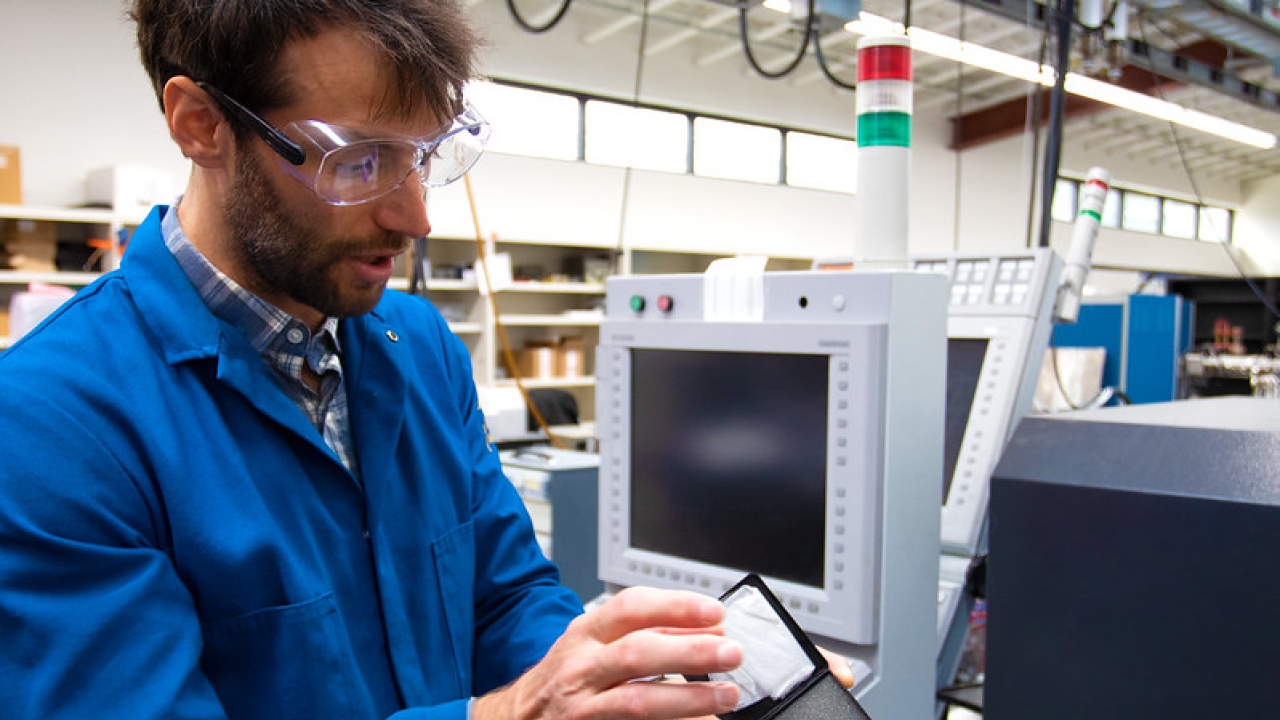
Across the Spectrum
How researchers in the Department of Electrical and Computer Engineering are advancing science in electromagnetics
When it comes to innovating within applied electromagnetics, Assistant Professor William "Billy" Putnam has found that the best way to move forward is to look toward the past.
Putnam's research in the Department of Electrical and Computer Engineering at the University of California, Davis, involves controlling electrons and photons at extreme timescales to build specialized sources of electromagnetic waves and detectors for these waves. In short, he says he is "making big science small" — that is, translating technologies that have been used to make high-power, large-scale systems to compact platforms in a way that could create futuristic sensors and detectors that would improve everything from environmental monitoring to medical diagnostics.
It is research at an ultrafast frontier, and Putnam says that he and his team can pursue this research because they have delved into what other scientists sometimes call the "old-fashioned" science of vacuum microelectronics, thanks to Distinguished Professor Neville Luhmann and his laboratory.
"Usually when you say vacuum tube, people think, 'Oh, that's old fashioned; That's back when electronics filled up rooms,'" Putnam said. "But, in actuality, there is incredible vacuum tube technology developed and refined over the past 100 years that is still the best way we have for amplifying certain electromagnetic waves. So, this partnership with Professor Luhmann has allowed me to innovate in ways that otherwise wouldn't be possible."
The Luhmann Lab
Luhmann is an internationally regarded researcher and educator in the areas of high-power-microwave and millimeter-wave devices and systems, basic plasma physics, microwave plasma interactions, and innovative millimeter-wave diagnostics and instrumentation.
He has authored about 300 publications on the topic and has won numerous awards for his outstanding contributions and leadership to his field, including the Kenneth J. Button Award from The Institute of Physics and the Plasma Science and Applications Committee Award from the Institute of Electrical and Electronics Engineers. He's currently working on projects related to nuclear fusion energy and diagnostic technology — something he has been a leader in since the 1970s.
"What I've tried to do is help and collaborate," Luhmann said. "Billy has used my lab space and equipment, which has helped him jumpstart his research. He's gotten quite a bit of funding from a variety of agencies. In that small way, I'm hoping I've helped him."
In addition to him being a vault of knowledge on the topic, Putnam said Luhmann's lab facilities are extremely rare.
"The College of Engineering is such a unique place to work on this," he said. "There are very few places in the country or world where I could do the same kind of work."
Innovating at every level
To understand the importance of Luhmann's lab, one must first understand a little bit about vacuum electronics. Vacuum electronics are not like normal electronics and require many specialized parts to create a test environment.
In a vacuum electronic device, you have a mechanism called the cathode that generates a beam of electrons. In the cathode, a piece of metal is heated until electrons boil off; it is almost like water turning into vapor, but instead of molecules jumping out of a liquid, electrons are jumping out of a metal. The stream of electrons from the cathode is then focused into a beam that is accelerated through a specially designed structure. As the beam passes through the structure, the electrons give their energy to an electromagnetic wave.
In Luhmann's lab, they have the tools and know-how to do it all.
"In Professor Luhmann's facility, what's amazing is that he basically makes every part of this process," Putnam said. "They are just so vertically integrated — they can do everything from start to finish — which allows you to innovate at any level. I haven't seen anything else like it."
Taking vacuum electronics into the infrared
Putnam's goal for the future is to take vacuum electronics into the terahertz and infrared domains. Terahertz-to-infrared is a region of the electromagnetic spectrum that is between the microwave domain (the traditional home of vacuum electronics) and visible light (the traditional home of lasers). This long wavelength region of the spectrum is excellent at detecting molecular vibration frequencies and is of tremendous technological interest.

Putnam is hopeful his team could make the first device that looks like a vacuum electronics device in the infrared sometime in 2024 thanks to collaborations with the UC Davis Center for Nano-MicroManufacturing and a collaborative, National Science Foundation-funded project with the Massachusetts Institute of Technology. If successful, Putnam's developments could improve our ability to detect trace gases via their molecular fingerprints, which would have applications in improving everything from environmental analysis to medical sensing and diagnostic tools.
Putnam said his partnership with Luhmann is just one of many examples in the Department of Electrical and Computer Engineering where people are collaborating to pursue their academic curiosity and advance science in a meaningful way.
"As electrical engineers, a big thing we care about is electromagnetic waves. In our department, and through this research, we are trying to work across almost the entire spectrum and make cool devices for all kinds of applications: health, radar, communications, everything. And that's unique."
